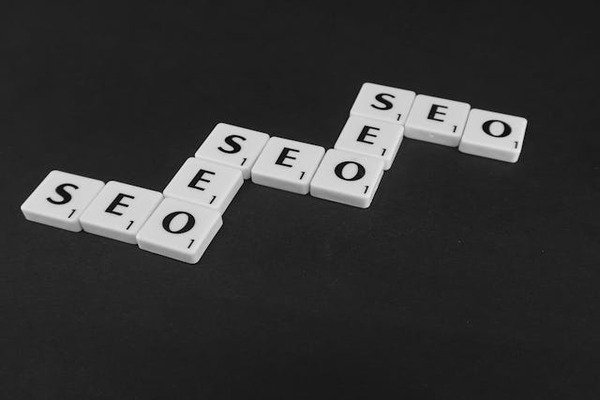Why SEO And SEM Matter For Business Growth Today?
Achieving online success as a small business requires a strategic and well-planned marketing approach that effectively integrates search engine optimization (SEO) and search engine marketing (SEM). By combining these two powerful digital strategies, businesses can significantly enhance their online visibility, attract more qualified leads, and increase conversions. SEO focuses on optimizing your website for organic search rankings, ensuring that your content appears in front of potential customers actively searching for your products or services. Meanwhile, SEM uses paid advertising to target specific audiences quickly, driving immediate traffic and results. Through my experience, I have seen firsthand how leveraging both SEO and SEM creates a well-rounded digital marketing strategy that leads to sustainable growth and long-term success for small businesses across various industries. Mastering this combination can be the key to scaling your business in the competitive online marketplace.

SEO vs. SEM: Understanding Their Individual and Combined Value
When discussing digital marketing strategies, the comparison between SEO and SEM often arises. While both are essential for online visibility, they work best when used together rather than separately.
The Key Differences Between SEO and SEM
- SEO focuses on optimizing a website to rank organically in search engines. It involves strategies like keyword optimization, content creation, and backlink building to improve long-term search visibility.
- SEM, on the other hand, includes paid strategies like PPC (Pay-Per-Click) advertising to appear at the top of search engine results instantly. This approach delivers immediate traffic but requires continuous investment.
Why Combining SEO and SEM Is Powerful
Instead of choosing one over the other, businesses should integrate SEO and SEM for a well-rounded digital marketing approach. SEM can provide quick results and data-driven insights, while SEO builds sustainable long-term growth. Together, they maximize visibility, traffic, and conversions.
By understanding their individual strengths and using them in a cohesive strategy, brands can create high-impact digital campaigns that drive real, measurable results.

What is SEO?
Search Engine Optimization (SEO) is a strategic system of digital techniques aimed at improving a website’s visibility on search engines like Google. By implementing effective SEO strategies, businesses can increase both the quantity and quality of online traffic through organic search results. For small business owners, this means attracting potential customers who are actively searching for products or services they offer.
Why SEO is Essential for Business Growth
In today’s competitive digital landscape, SEO is crucial for creating brand exposure and ensuring your business remains visible online. A website that doesn’t appear in search results is practically invisible to potential customers, making it difficult to generate leads or sales. Without SEO, even the best products or services may go unnoticed, leading to missed opportunities and limited growth.
Overcoming SEO Challenges for Small Businesses
Many small business owners hesitate to dive into SEO due to its complexity, especially when they lack the budget to hire professional help. However, establishing a solid SEO foundation doesn’t have to be overwhelming. There are simple yet effective steps you can take to enhance your website’s search performance and improve its visibility over time.
With the right approach, even businesses with minimal SEO experience can start making progress and attracting organic traffic effortlessly.
Essential Steps to Boost Your Online Presence and Visibility
In today’s digital world, a strong online presence is crucial for any business. Whether you operate a local shop or an online service, implementing the right strategies can significantly enhance your visibility, attract more customers, and improve your brand reputation. Below are essential steps you should take to optimize your digital presence and stay ahead of the competition.
Set Up and Optimize Your Google My Business Account
Creating a Google My Business (GMB) account is one of the most effective ways to improve your local search visibility. This free tool allows you to manage how your business appears on Google Search and Maps. To maximize its benefits:
- Fill out all necessary details, including business name, address, phone number, website, and working hours.
- Upload high-quality images of your business, products, or services to build trust and attract more customers.
- Verify your physical address to ensure your business appears on Google Maps, making it easier for local customers to find you.
Research Your Target Audience and Keywords
Understanding your audience is key to digital success. Conduct thorough research to identify how potential customers search for businesses like yours. Here’s how you can do it:
- Use keyword research tools such as Google Keyword Planner, Ahrefs, or SEMrush to find commonly searched terms in your industry.
- Identify high-impact keywords and naturally integrate them into your website content, blog posts, titles, and meta descriptions.
- Focus on long-tail keywords, as they often have lower competition and attract highly relevant traffic.
Leverage the Power of Social Media
Social media platforms are indispensable for business growth. They help you engage with your audience, increase brand awareness, and drive traffic to your website. To make the most of social media:
- Create business accounts on platforms relevant to your audience, such as Facebook, Instagram, LinkedIn, and Twitter.
- Consistently share valuable content, including promotions, industry insights, and customer testimonials.
- Engage with your followers by responding to comments, messages, and reviews.
Start a Blog to Provide Valuable Content
A well-maintained blog not only improves SEO but also positions your business as an authority in your industry. Blogging helps you:
- Offer informative content that answers common customer questions.
- Organically incorporate keywords to improve search engine rankings.
- Drive traffic to your website and encourage potential customers to explore your services.
- Establish credibility and build trust with your audience.
To maximize impact, post regularly and ensure your content is well-researched, engaging, and relevant to your audience’s needs.
Optimizing your online presence requires a combination of strategic planning and consistent effort. By setting up Google My Business, conducting thorough keyword research, leveraging social media, and maintaining a high-quality blog, you can increase visibility, attract more customers, and grow your business. Stay proactive and adapt to changing trends to maintain a competitive edge in the digital space.
The Powerful Benefits of SEO for Your Business
Search Engine Optimization (SEO) is a game-changer for businesses looking to enhance their online presence and visibility. By optimizing your website for search engines, you increase traffic, improve user experience, and ultimately drive business growth. The easier your business is to find online, the faster it will grow.
Why SEO Matters
Investing in SEO isn’t just about ranking higher on Google, it’s about creating a better, more accessible website that serves your audience effectively. When implemented correctly, SEO can:
Key Benefits of SEO
- Improve User Experience – A well-structured, optimized website is easier to navigate.
- Drive More Traffic – Higher rankings in search engines mean more visitors to your site.
- Increase Conversion Rates – More traffic leads to more potential customers taking action.
- Boost Brand Awareness – Ranking on the first page of search results strengthens credibility.
- Expand Your Market Reach – SEO helps you connect with new audiences beyond your local area.
- Give You a Competitive Edge – Outperform competitors by being the first choice for users.
- Provide 24/7 Availability – Your website works for you even when your business is closed.
By leveraging SEO techniques, you’re not just making your site search-engine friendly but you’re creating a digital experience that customers can easily find, engage with, and trust. In a world where online presence defines success, SEO is the key to staying ahead.

Understanding SEM: How Paid Advertising Boosts Your Online Visibility
Search Engine Marketing (SEM) is a powerful digital strategy that helps businesses gain traffic through paid advertising. While Search Engine Optimization (SEO) focuses on organic methods to rank in search results, SEM leverages paid tactics like pay-per-click (PPC) marketing, paid search, display ads, and remarketing campaigns to drive visitors to your website.
How SEM Increases Visibility and Conversions
With paid advertising, your brand can secure prime placement in search engine results pages (SERPs), often appearing above organic listings. This increased visibility leads to higher site traffic, improved brand awareness, and ultimately, more conversions. By strategically investing in SEM, businesses can reach their target audience at the right moment—when they are actively searching for specific products or services.
Why SEM is a Valuable Strategy for Small Businesses
Although not a requirement, SEM offers small businesses a competitive edge by ensuring their ads appear for relevant search queries. Well-executed SEM campaigns allow you to:
- Create highly targeted traffic through sponsored search results.
- Increase brand exposure by displaying ads in front of potential customers.
- Improve conversion rates by directing users to optimized landing pages.
By integrating SEM into your digital marketing strategy, you can maximize visibility and attract the right audience faster than organic SEO alone. With 100 words in this content, you now have a clearer understanding of how SEM can drive your business forward.
The Benefits of SEM for Small Businesses
Search Engine Marketing (SEM) is one of the most effective ways to put your business in front of potential customers at the right time and in the right place. By leveraging paid advertisements, small businesses can ensure their products, services, or information reach an audience that is actively searching for them. This targeted approach leads to fast and measurable results, providing a competitive edge against larger corporate competitors. When executed correctly, SEM can drive substantial returns on investment, making it an essential tool for businesses looking to grow their online presence.
Fast and Effective Audience Targeting
Unlike organic search strategies that take time to build traction, SEM delivers immediate results. Paid ads are strategically positioned to attract users who are already interested in what your business offers. This means higher chances of engagement, more qualified leads, and ultimately, increased conversions.
Budget-Friendly and Scalable
One of the greatest advantages of SEM is its flexibility in cost management. Businesses of all sizes can set budgets that align with their financial goals, adjusting spending based on performance and needs. Whether you want a short-term boost or a long-term strategy, SEM allows you to control your advertising expenses without overspending.
A Powerful Tool for Local Businesses
With 74% of internet users conducting local searches and 61% of those searches resulting in purchases, SEM proves to be a game-changer for customer acquisition. By targeting local consumers, businesses can attract buyers who are ready to make purchasing decisions, increasing foot traffic and online conversions.
Gain an Edge Over Competitors
Small businesses often struggle to compete with industry giants, but SEM levels the playing field. With the right keyword strategy and ad placements, even smaller companies can rank prominently on search engine results pages, making them visible to their target audience ahead of their competitors.
By implementing SEM, businesses can achieve faster growth, attract more customers, and optimize their marketing efforts efficiently. This strategy is an essential component of digital success, helping businesses thrive in a competitive online marketplace.

SEO & SEM: Stronger Together for Maximum Digital Success
Why Choose Between SEO and SEM When You Can Have Both?
SEO (Search Engine Optimization) and SEM (Search Engine Marketing) are often viewed as separate digital strategies. Business owners are left to choose between organic growth through SEO or fast, paid traffic via SEM. But why pick one when combining both can deliver even greater results?
Rather than treating them as competitors, integrating SEO and SEM into your marketing strategy can drive stronger, more sustainable profits.
The Power of SEO: Long-Term Growth
SEO is essential for organic visibility. It helps your website rank higher on search engines, bringing in a steady flow of potential customers. However, it requires continuous effort, patience, and optimization. The long-term benefits of SEO make it a crucial investment for businesses looking to establish authority and credibility.
The Strength of SEM: Immediate Results
SEM focuses on paid advertisements that quickly generate traffic. When properly executed, SEM can drive immediate visibility, capturing leads and conversions in a short timeframe. However, without a solid SEO foundation, these quick wins might not translate into lasting customer relationships.
SEO + SEM: A Winning Combination
Both SEO and SEM share the ultimate goal of increasing website traffic. While their approaches differ—SEO being a long-term strategy and SEM offering instant results—they work best when combined.
- SEO builds trust and credibility that converts SEM-driven visitors into loyal customers.
- SEM captures immediate traffic while SEO ensures a solid, optimized website to keep users engaged.
- Together, they create a sustainable digital strategy that delivers both short-term wins and long-term growth.
Unlocking Success With a Balanced Strategy
Businesses that strategically integrate SEO and SEM can outperform competitors no matter their size. A well-rounded digital marketing plan ensures both quick conversions and lasting brand recognition.
By combining SEO’s organic strength with SEM’s instant impact, you’ll create a digital powerhouse that drives consistent results, increases revenue, and keeps you ahead in an ever-competitive online world.
Conclusion
Integrating SEO and SEM is essential for sustainable business growth in today’s digital world. SEO provides long-term visibility, while SEM delivers immediate traffic and targeted results. By combining both strategies, businesses can maximize their reach, attract qualified leads, and enhance conversion rates. A well-optimized website, backed by effective SEO, ensures that SEM-driven traffic converts into loyal customers. To stay competitive, businesses must adapt to evolving search trends and continuously optimize their digital marketing efforts. Whether aiming for organic authority or instant exposure, leveraging SEO and SEM together creates a strong foundation for success. Investing in both strategies will not only boost brand awareness but also drive measurable business growth in a highly competitive online marketplace.
FAQs
What is the main difference between SEO and SEM?
SEO focuses on organic search rankings, while SEM involves paid advertising to achieve immediate visibility in search engine results.
Why should businesses combine SEO and SEM?
Combining SEO and SEM maximizes online visibility, attracting both long-term organic traffic and instant paid leads for faster growth.
How long does it take to see results from SEO?
SEO is a long-term strategy and can take months to show significant improvements, depending on competition and optimization efforts.
Is SEM necessary if my SEO is strong?
Yes, SEM complements SEO by delivering immediate results, helping businesses capture more leads while organic rankings continue to grow.
How can small businesses afford SEM on a budget?
Small businesses can set flexible SEM budgets, targeting high-intent keywords and optimizing campaigns to maximize returns efficiently.
